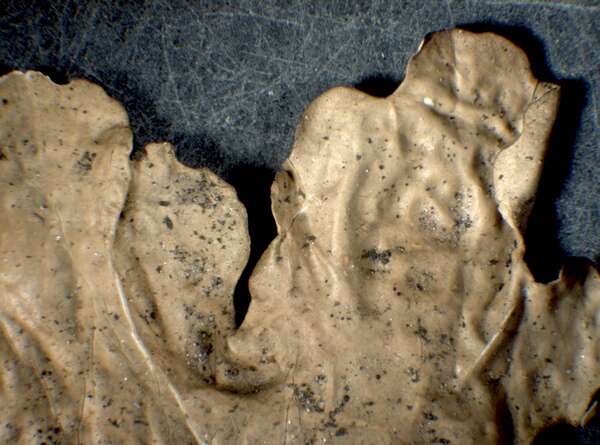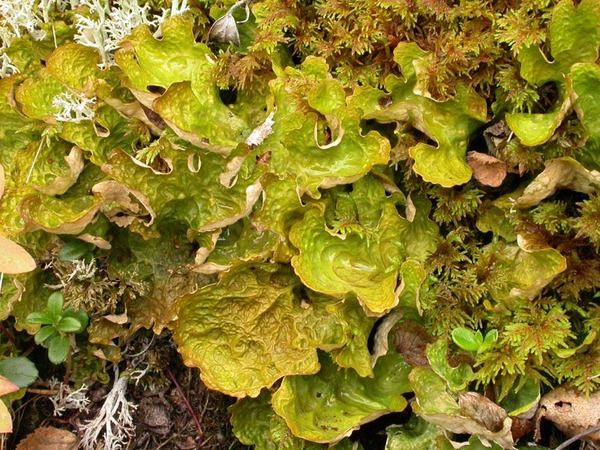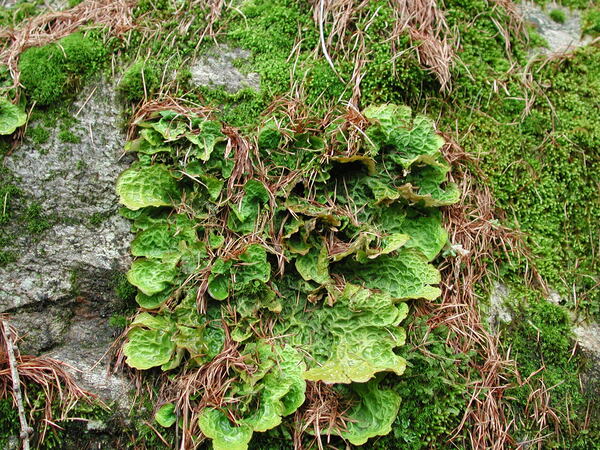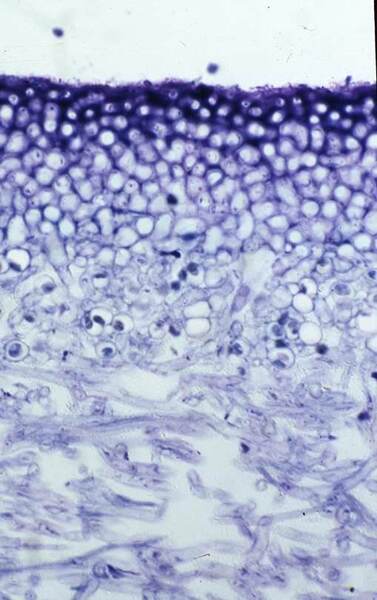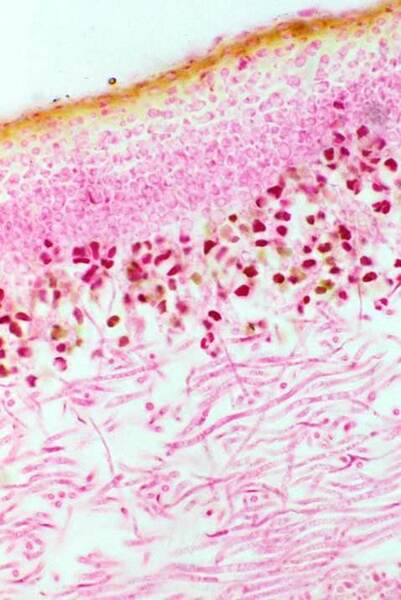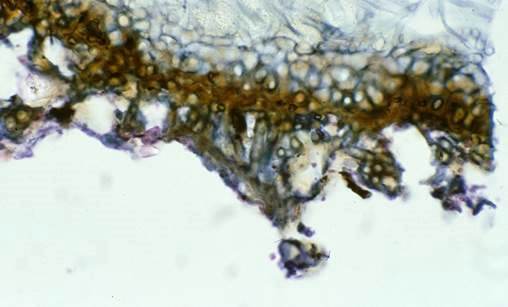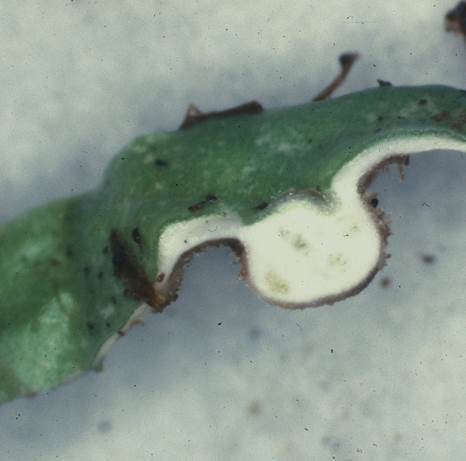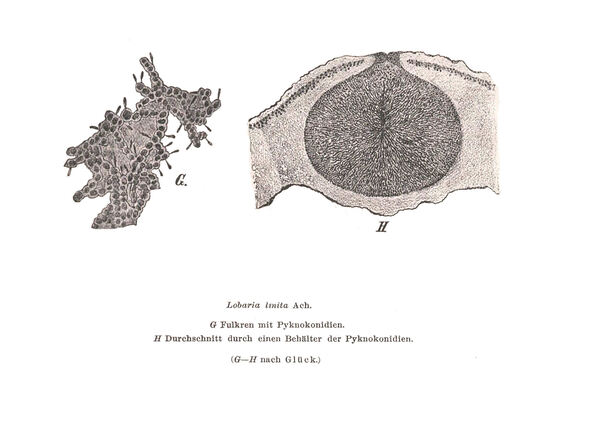Lobaria linita (Ach.) Rabenh.
Deutschl. Krypt.-Fl., 2: 65, 1845. Basionym: Sticta linita Ach. - Syn. Meth. Lich.: 234, 1814.
Synonyms: Lobaria garovaglii (Schaer.) Jatta; Sticta garovaglii Schaer.
Distribution: N - Frl (Nascimbene & al. 1998, Tretiach & Hafellner 2000), Ven (Nascimbene & Caniglia 2000, 2003c, Nascimbene 2002, Tomaselli & al. 2006), TAA (Nascimbene & al. 2004, 2004b, 2022), Lomb (Dalle Vedove & al. 2004), Piem (Isocrono & al. 2004, Morisi 2005, Isocrono & Piervittori 2008, Matteucci & al. 2013), VA (Borlandelli & al. 1996, Piervittori & Isocrono 1997, 1999).
Description: Thallus foliose, heteromerous, dorsiventral, broad-lobed, potentially to 30 cm across, loosely attached, without soredia and isidia. Lobes broad and rounded, rarely linear, 1-3(-4) cm wide, more or less dichotomously divided, ascending at tips. Upper surface more or less glossy, grey-green to grey-brown, bright green when wet, strongly reticulately ridged with marked depressions, lacking isidia and soredia. Lower surface white to pale brown at margins and on the swellings corresponding to the depressions on upper surface, otherwise brown-black, tomentose except on the swellings, erhizinate or with dark, up to 4 mm long rhizines. Upper cortex pseudoparenchymatous, 30-50 µm thick, consisting of 5-6 layers of cells with c. 10 µm wide lumina; medulla white, often with internal cephalodia appearing on the surface as c. 2 mm broad swellings. Apothecia common, laminal or marginal, most frequent on ridges, up to 3.5(-4) mm across, with a brown-red disc and a warted thalline margin. Epithecium reddish brown; hymenium colourless or pale brown in lower part, 95-113 µm high; paraphyses mostly simple, 1.5-2.5 thick, not capitate; hypothecium brownish, 60-110 µm high. Asci (6-)8-spored, clavate, fissitunicate, the thickened apex with a K/I+ blue ring, Peltigera-type. Ascospores 1-(3)-septate, fusiform to narrowly ellipsoid, straight, hyaline, 21-34 x 6-9 µm. Pycnidia laminal and marginal. Conidia bacilliform, c. 5 x 1-1.5 µm. Photobiont chlorococcoid (cyanobacterial in the cephalodia). Spot tests: upper cortex K-, C-, KC-, P-, UV-;medulla K- or K+ pale yellow. Chemistry: tenuorin, 4-0-methylgyrophoric and gyrophoric acids, plus traces of other substances.
Note: a circumpolar, arctic-alpine species found on bryophytes and acid soil rich in humus over siliceous substrata near and above treeline: restricted to the Alps in Italy.
Growth form: Foliose, broad lobed
Substrata: soil, terricolous mosses, and plant debris
Photobiont: green algae other than Trentepohlia
Reproductive strategy: mainly sexual
Commonnes-rarity: (info)
Alpine belt: very rare
Subalpine belt: extremely rare
Oromediterranean belt: absent
Montane belt: absent
Submediterranean belt: absent
Padanian area: absent
Humid submediterranean belt: absent
Humid mediterranean belt: absent
Dry mediterranean belt: absent
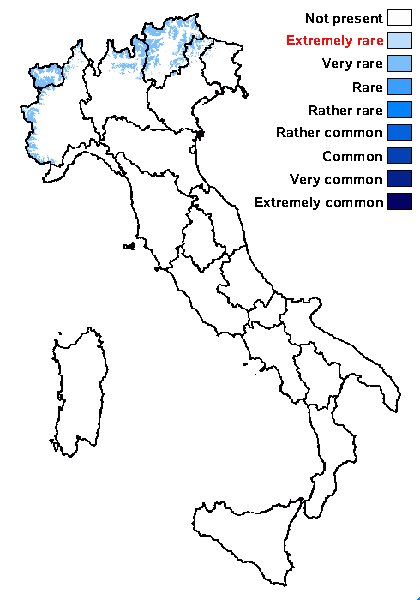
Predictive model
Herbarium samples
Growth form: Foliose, broad lobed
Substrata: soil, terricolous mosses, and plant debris
Photobiont: green algae other than Trentepohlia
Reproductive strategy: mainly sexual
Commonnes-rarity: (info)
Alpine belt: very rare
Subalpine belt: extremely rare
Oromediterranean belt: absent
Montane belt: absent
Submediterranean belt: absent
Padanian area: absent
Humid submediterranean belt: absent
Humid mediterranean belt: absent
Dry mediterranean belt: absent

Predictive model
| Herbarium samples |
 Index Fungorum
Index Fungorum
 GBIF
GBIF


